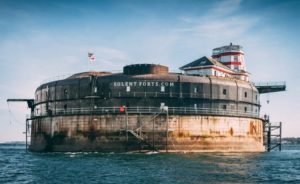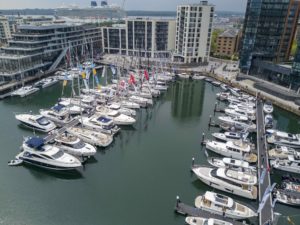Planning permission sought for No Man’s Land fort conversion

A Victorian fort built a mile out to sea to protect the UK from invasion could become an ultimate luxury home.
No Man’s Land Fort, which can only be reached by helicopter or boat, was previously a four-star hotel with 23 en suite bedrooms, staff quarters and five themed bars.
Now the fort could become a single luxury house after millionaire businessman Mike Clare applied for planning permission to convert it, according to The Sun.
No Man’s, Spitbank, and Horse Sand forts were all built in the Solent just a mile off the coast of Portsmouth, Hampshire, the base of the Royal Navy.
The forts off the south coast could now be an attractive purchase after it was announced they were to be sold off by Clare – founder of the bed company Dreams – in September last year.
It was thought No Man’s and Spitbank Forts could fetch £8 million together.
The planning application for No Man’s – which also has a lighthouse with private dining, laser battle play area, restaurant and spa – is asking the Isle of Wight Council for permission to change the hotel into a single residential property.
Plans put forward by Mr Clare’s holding company, Clarenco, would see the building converted from a hotel into a house with at least 15 bedrooms in the middle of the Solent.
As a hotel, No Man’s Land Fort had capacity for 200 people and cost up to £990 per night.
The fort has 99,000 sq ft over four floors and includes rooftop hot tubs, sauna, fire pit, hot pool and helipad.
 Clare bought Spitbank Fort in 2009 and later bought Horse Sand and No Man’s forts in 2012.
Clare bought Spitbank Fort in 2009 and later bought Horse Sand and No Man’s forts in 2012.
The three forts were originally ordered by then-Prime Minister Henry Temple, the third Viscount Palmerston, in the mid-1800s after concerns were raised over the strength of the French Navy.
However, when they were never actually used in war, despite also having submarine defences strung between them during the Second World War, they become known as ‘Palmerston’s Follies’.
They boast 15ft tall granite walls and were used as temporary army barracks but were decommissioned by the Ministry of Defence in 1956.
Read the full article in The Sun.










